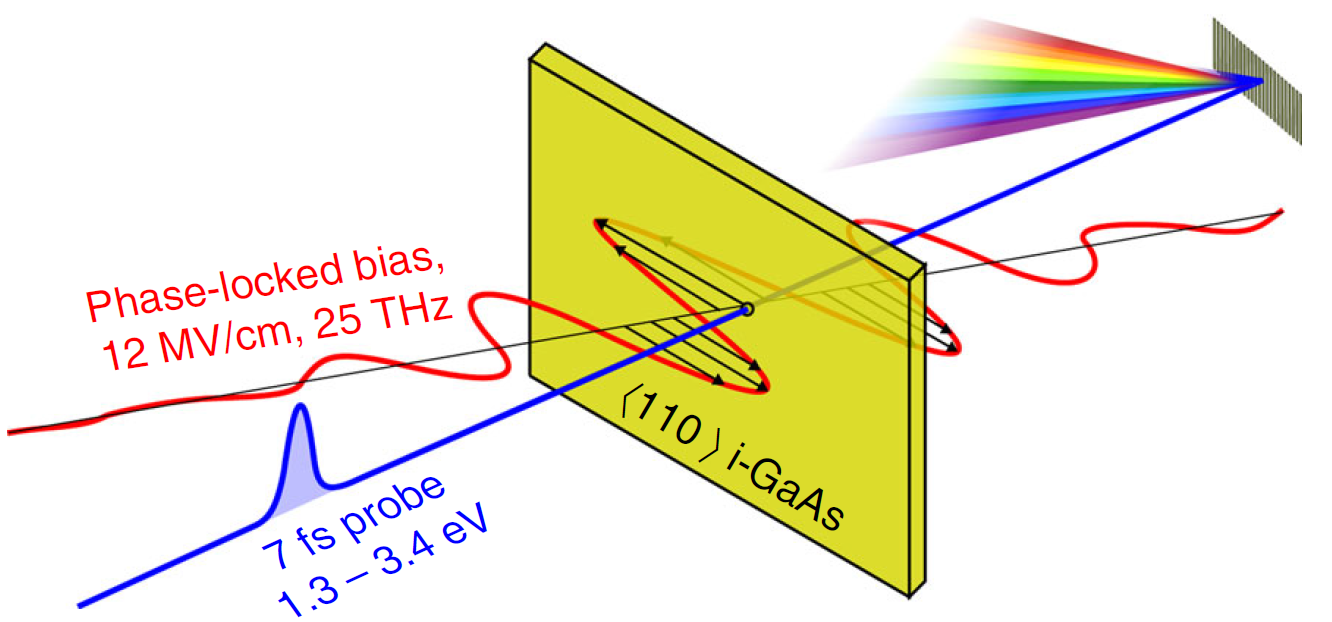Scientists from the Universities of Konstanz and Paderborn have succeeded in realizing and proving the so-called Wannier-Stark localization for the first time in a high-purity bulk gallium arsenide crystal manufactured at ETH Zurich. Physicists have overcome hurdles that have long been considered insurmountable in the field of optoelectronics and photonics. With this breakthrough, they have made it into "Nature Communications". The article is available on the Internet at: https://www.nature.com/articles/s41467-018-05229-x.
The transient Wannier-Stark localization is accompanied by drastic changes of the electronic states, resulting, for example, in extremely large optical nonlinearities and possibly also alter chemical properties.
"In perfect insulators and semiconductors, the electronic states are extended over the entire crystal. That should change according to an already approx. 60 years old prediction, if one applies an electric voltage", explains Prof. Dr. Torsten Meier from Paderborn University. "If the electric field inside the crystal is strong enough, the electronic states can become localized onto just a few atoms. This state is called Wannier-Stark ladder.
The main problem, however, is that even perfect insulators and semiconductors become metallic in strong electric fields and thus then an electrical current flows, explains Prof. Dr. Alfred Leitenstorfer from the University of Konstanz and adds: "When this happens, the electrons are accelerated into energetically higher bands. Since this phenomenon occurs in conventional semiconductor materials at even lower field strengths than are necessary to realize the Wannier-Stark localization, this state cannot be achieved in this way ".
A way out of this dilemma is provided by ultrafast optics, in which the high field strengths necessary for the Wannier-Stark localization are present only very briefly in the crystal in the form of electromagnetic fields. Leitenstorfer: "If one uses suitable intense light pulses, which consist of only a few oscillations with period lengths of some 10 femtoseconds, the Wannier-Stark localization can be realized in a short time window".
These challenges have now been overcome in experiments performed in the Ultrafast Phenomena and Photonics group lead by Prof. Dr. Alfred Leitenstorfer (University of Konstanz). The first-time experimental realization of Wannier-Stark localization in a bulk gallium arsenide crystal was made possible by high-intensity terahertz radiation with field strengths in excess of 10 million volts per centimeter. This state was confirmed by a characteristic change in the optical properties as measured by further ultrashort optical light pulses. "The results of the measurements are in line with theoretical considerations and simulations, which were performed in the groups of my colleague Prof. Dr. Wolf Gero Schmidt and myself ", Meier says.
In the future, this extreme state of matter will be examined in more detail on the atomic scale and its special properties will be exploited.
The press release was also mentioned in "Idw Informationsdienst Wissenschaft".
The news are mentioned in different news portal with an almetric attention score of 88.
See the whole list here.
Text: Prof. Dr. Torsten Meier, Prof. Dr. Alfred Leitenstorfer, Nina Reckendorf

